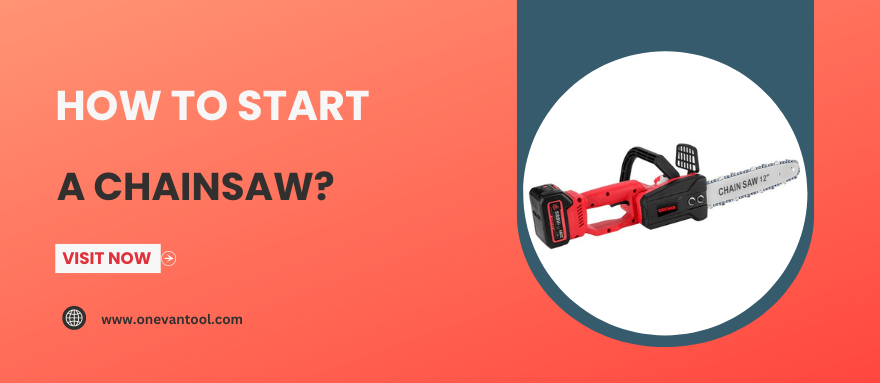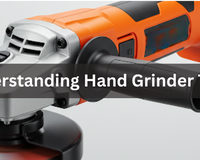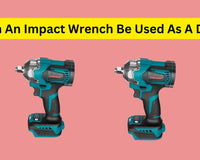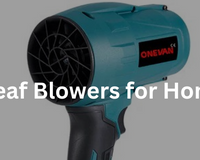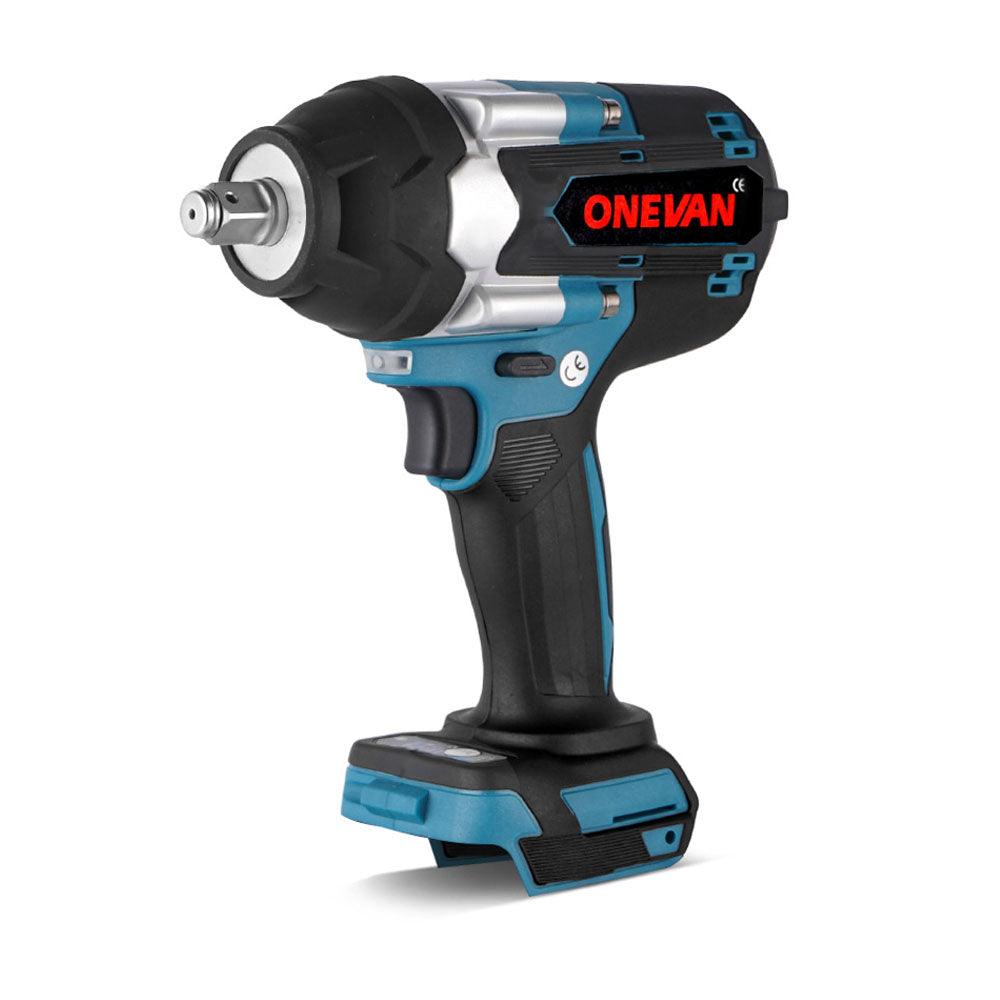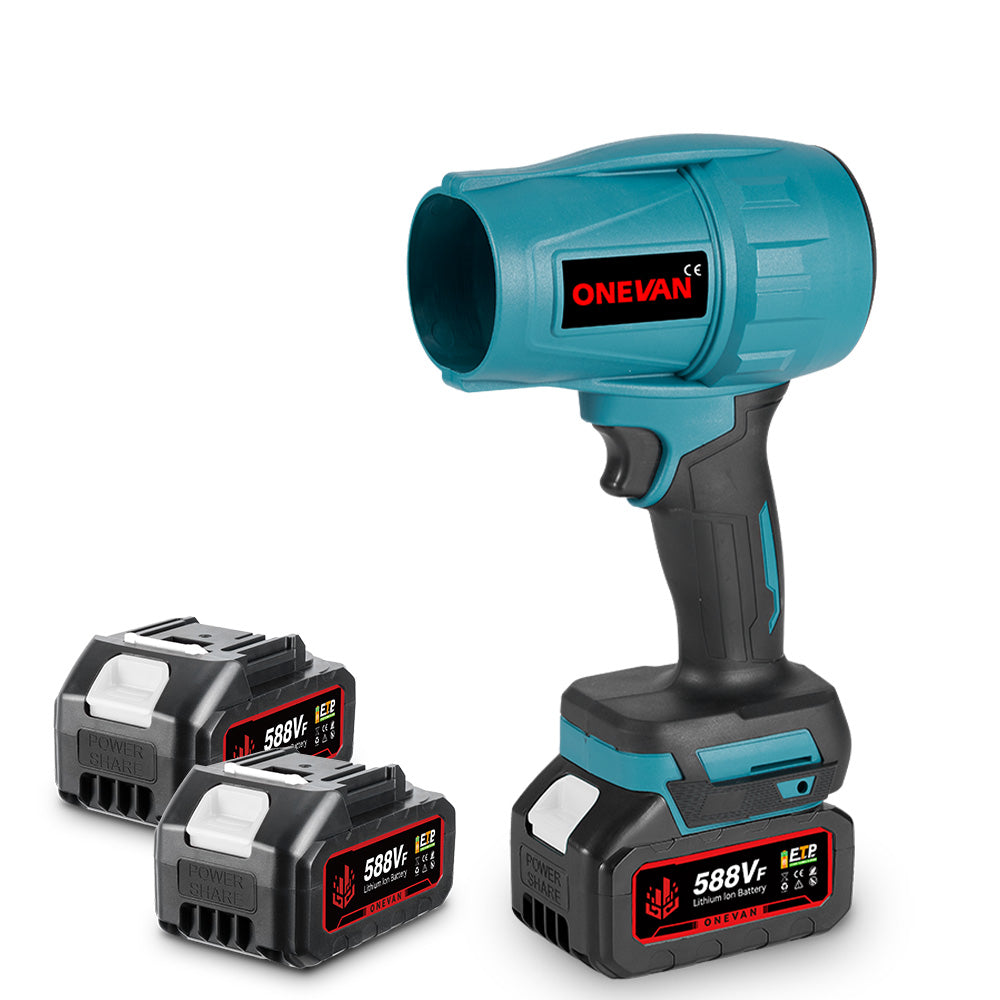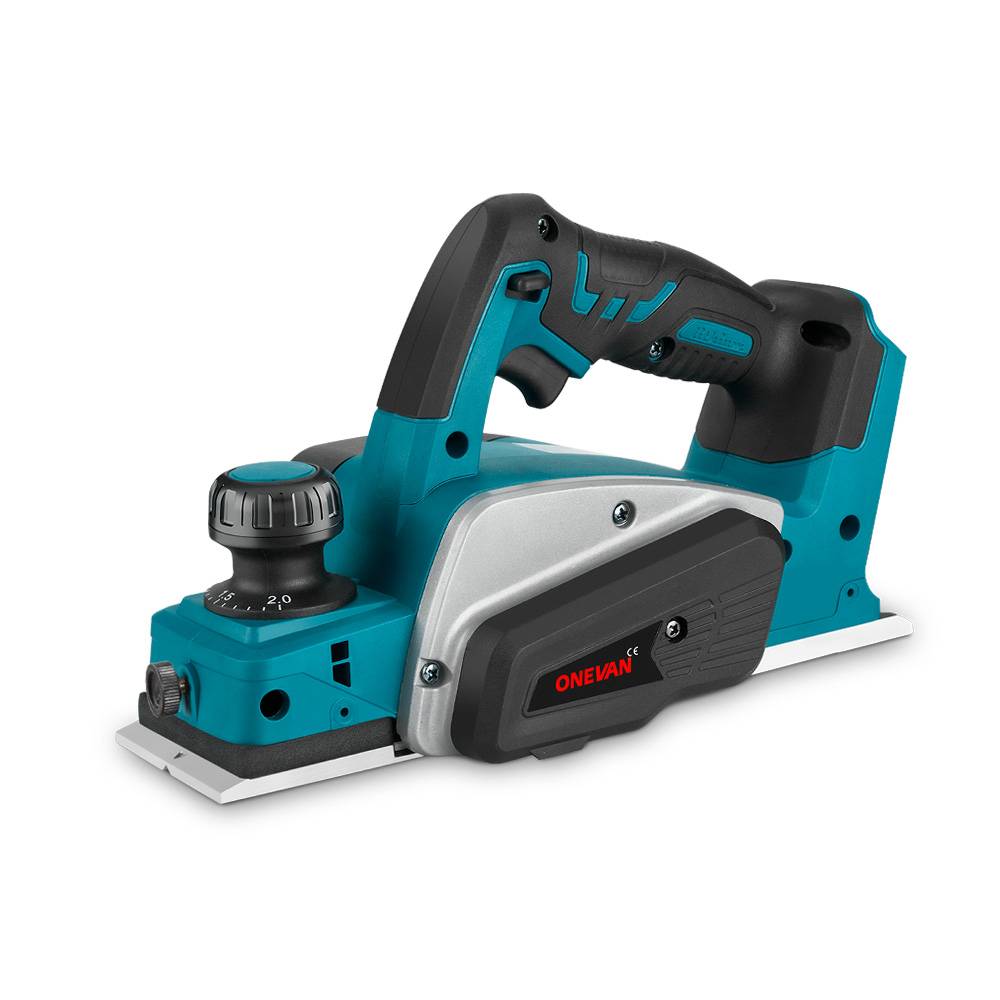Welcome to our comprehensive guide for beginners on starting a chainsaw. Whether you're new to chainsaws or need a refresher, we'll walk you through the start-up procedures for both corded and cordless models, along with troubleshooting tips. A cordless chainsaw model is very compact and quite light, perfect for work in the garden, and does not require special physical training to cope with it. Both women and old people can use it.
Chainsaws come in various types, including cordless and corded models. Gasoline chainsaws, which are another type, are equipped with two-stroke engines and require a specific fuel mixture. This mixture is a blend of gasoline and oil in a certain proportion, which is typically indicated on the tool itself. Since each model has unique specifications, the proportions for the fuel mixture can vary from one model to another.
Before going into details, let’s discuss the types of chainsaws first.
1. Types of Chainsaws
There are two main types of chainsaws:
- Gas-powered
- Electric-powered chainsaws
Each type has its own advantages and disadvantages. Their features make them suitable for different jobs.
Gas Chainsaws
- Description: It is a powerful machine ideal for tough jobs like felling trees and cutting firewood. Gas chainsaws are powered by robust gasoline engines, making them the top choice for portable tasks and heavy-duty applications.
- Advantages:
- More powerful for demanding tasks
- Greater cutting range due to no cord
- Disadvantages:
- Noisier operation
- Requires gasoline and oil mixing
- Higher maintenance needs
- Heavier weight
Electric Chainsaws
- Description: Electric chainsaws are ideal for lighter tasks such as trimming branches and cutting lumber, offering quieter operation and lower maintenance.
- Electric chainsaws are available in two main types:
- Corded
- Cordless.
- Corded Electric Chainsaws: Provide consistent power as long as they are plugged into an outlet. Ideal for controlled cutting near a power source.
- Cordless Electric Chainsaws: They are portable similar to gas chainsaws. However, they operate using a battery. Battery life is a key factor to consider.
- Advantages:
- Quieter operation
- Lower maintenance requirements
- Lighter weight
- No fumes or emissions
- Disadvantages:
- Less powerful than gas chainsaws
- Corded models limit range
- Cordless models require battery charging
|
Feature |
Gas Chainsaw |
Electric Chainsaw |
|
Power Source |
Gasoline engine |
Electric motor |
|
Power Output |
Higher |
Lower |
|
Portability |
Excellent |
Corded: Limited; Cordless: Excellent |
|
Maintenance |
Higher |
Lower |
|
Noise Level |
Louder |
Quieter |
|
Emissions |
Yes |
No |
2. How to Start a Gas Chainsaw?
Before starting any power tool, it is mandatory to ensure safety procedures. Same is the case with chainsaw operations. An operator must wear safety glasses, gloves, and long boots to avoid any damage to the body.
Pre-Start Check:
- Chain Tension: Grab the chain with your gloved hand. You will pull it away from the bar slightly. It should only move a bit (about 1/8 inch). If it's too loose, tighten it following the manual instructions. Remember! A dull chain is dangerous and requires sharpening.
- Fuel and Oil:Find the fuel tank and oil reservoir. Check the levels through the see-through windows. Refill it with the recommended fuel and oil mix if needed. Read your chainsaw's manual for the exact ratio. Using the wrong mix will make the engine vulnerable.
Starting Up: Step-by-Step
- Find Flat Ground:Place the chainsaw on a flat, clear surface. This gives you a stable ground. It also prevents the chain from accidentally hitting anything. Safety Tip:: Always place the chainsaw on a stable, flat surface before starting to prevent accidental chain rotation and ensure your safety.
- Engage the Chain Brake: This is a lever or button on the front handle. Push it forward to engage the chain brake. The chain shouldn’t spin while you're starting the engine.
- Choke On (Cold Engine): If your chainsaw has a choke lever, locate it near the air filter. It will be marked as "choke" or have a symbol. Flip the choke lever to the "on" position. This restricts airflow. Simultaneously, it makes easier for a cold engine to start. If your chainsaw has a primer bulb, press it firmly several times until you see fuel filling the bulb.
- Throttle Lock (if required): Some chainsaws come with throttle trigger lockout button. This prevents accidental acceleration. Hold it down according to the manual's guidelines.
- Grip: Now, firmly grip the handle. It is close to the engine. It will help you control the saw.
- Find the Starter Rope: Locate the starter rope handle. It is usually located on the side of the engine housing.
- Slow Pull First: Gently pull the starter rope out a few inches until you feel resistance. This "primes" the engine by pulling air and fuel into the cylinder.
- Strong Pull: As soon as you feel resistance, give the starter rope a brisk pull. Don't yank it too hard, but make a strong pull.
- Warm Up: Once the engine starts and runs smoothly, let it idle for a few minutes. This allows the engine to warm up properly.
Remember: Beginners face trouble starting a new chainsaw. In such situation, you need to consult your manual or call professional technicians. Starting the chainsaw after following these steps, consult your chainsaw's manual.
3. How to Start an Electric Chainsaw?

- Chain Tension (1/8" inch): Similar to gas chainsaws, make sure chain tension is accurate. After switching off the engine, take the chain slightly off the bar. It should only move a maximum of 1/8 of an inch or 3.1 millimeters. A blunt chain is rather ineffective and poses certain hazards.
Power Source (Corded):
- Voltage: Ensure the chainsaw is connected to the correct voltage (typically 110V or 220V) and that the outlet is in good condition to handle the amperage draw.
- Cord Length: Cord length should reach the working area. However, avoid excessive tension on the cord.
- Outlet Condition: Check the outlet for any damage. The purpose is to ensure it can handle the chainsaw's amperage draw (listed in the manual).
Battery Charge (Cordless):
- Battery Level: Verify the battery level using the charging indicator (lights or a gauge) and ensure it is fully charged before use.
- Battery Type: It is important to use correct battery type and voltage. Read the manual for details.
Step-by-Step Startup: Precise Control
- Safe Hold: Hold the chainsaw with both hands. You must ensure the chain brake is engaged (usually a hand guard pushed forward). It will prevent accidental chain rotation.
- Corded Model: Power Up: Plug the chainsaw's cord directly into a grounded outlet. You should not use extension cords exceeding recommended lengths..
- Cordless Model: Battery Installation: Find the battery installation point (usually on the handle or near the motor). Insert the fully charged battery.
- Disengage Safety Features: Release the chain brake and disengage any additional safety features; for example trigger lockouts.
- Start the Chainsaw: Locate the start button or trigger. Press and hold it to activate the motor. Electric chainsaws will start instantly.
4. How to Start a Chainsaw That Won't Start?

It feels quite complicated and frustrated when a powertool is not starting. Just take an example of your chainsaw that you have something wrong with it. Therefore, it is hard to start. But what if you have tried everything and nothing works out. Let’s explore some practical ways to fix your chainsaw.
Gas Chainsaws:
Fuel Problems:
- Check the Fuel: Check a clear fuel line. Also give a peek into the fuel tank. Is there any fuel? If not, refill with the correct fuel-oil mix. If fuel is present but looks discolored, you need to drain and replace it.
- Clean or Replace the Fuel Filter: A clogged fuel filter is the main reason to restrict fuel flow. Check the filter (usually near the fuel tank). For reusable filters, clean them with suitable solvent.
Spark Plug:
- Check the Spark Plug: Using a socket wrench (size specified in the manual), remove the spark plug and inspect it for wear or damage. Ensure the electrode gap is correct and clean or replace it if necessary. Subsequently, check the electrode gap (with a feeler gauge (size also specified in the manual). If you notice an incorrect gap, carefully bend the ground electrode to adjust it. Check if there is any sign of wearing or cracks on the spark plug.
- Clean or Replace the Spark Plug: If you notice the correct gap but the plug is worn out, clean it with a wire brush or replace it. You need to ensure that you have gapped the spark plug correctly.
Air and Fuel Filter Fixing:
Check the Air Filter:A clogged air filter can restrict air supply, leading to poor starting. Clean or replace the filter as needed to ensure optimal performance. Check the air filter housing which is normally around the carburetor. Take out the housing. Inspect the filter element. If it is blocked, unblock it with compressed air. If the filter is dirty, it is recommended to replace it.
Carburetor (For Advanced Users):
Inspect the Carburetor:A clogged carburetor can create a serious issue for your chainsaw. Apparently, it will be pretty difficult to diagnose the problem; however, you can consult your manual or visit an expert technician for regular tuning.
Electric Chainsaws:
- Check the Power Cord: The first step is to check if the cord is inserted in the power outlet. Similarly, also check if the cord is damaged or not. A damaged cord can cause power issues and safety hazards.
- Test the Outlet: Verify the outlet's functionality by testing it with other electrical appliances. A faulty outlet can prevent the chainsaw from starting.
- Inspect the On/Off Switch: A faulty switch can prevent the motor to start. Try toggling the switch a few times and check if there is any clicking sound. If the switch is stuck or doesn't click, it is not working.
- Replace the Switch: If you are an electrical guy and have some disassembly knowledge, you can replace it yourself. However, if you are beginner, contact a qualified technician.
Check the motor:
- Listen for Motor Noise: When you try to start the chainsaw, does the motor make any noise? If there is no noise, it indicates a severe motor issue.
- Check the Motor Components: Diagnosing motor issues require in-depth knowledge and special tools. If you are not comfortable with disassembling the motor, it is recommended to seek professional help.
Battery issues in cordless chainsaws:
- Check the Battery Charge: Double check if you have inserted a fully charged battery. Electric chainsaws have a battery charge indicator so you can check if it is enough charged.
- Test the Battery: If you find the battery is fully-charged but the chainsaw is not starting, the battery can be faulty. Some models allow testing the battery with a dedicated tester (check the manual). If you don’t carry a tester, try installing different fully charged battery from the same model.
What if these diagnostics methods don’t work?
You have followed all these steps? Still you are unable to start your chainsaw; it’s time to call a professional. A qualified technician can diagnose the issue and fix it on the spot.
Important Safety Note: Safety guidelines are crucial. You must ensure adequate dress code and operating a chainsaw. Disconnect the spark plug (gas models) or unplug the chainsaw (electric models) before starting any repair.
5. Conclusion
Starting a chainsaw is not a tough job. However, you should have basic understanding of different available models in the market. Especially, if you need a chainsaw for your home, you can face such situations where your chainsaw is not starting. In such scenario, this guide is going to help you a lot. However, do not forget to take all safety measures before starting repairs.
6. FAQ
1. Which chainsaw models are easiest to start (corded or cordless)?
Electric chainsaws (corded or cordless both models) have convenient starting. With electric chainsaws, you just need to push the button and motors starts immediately.
2. What are the two approved methods for starting a chainsaw?
Gas Chainsaws: Following the manufacturer's recommended procedure. This method usually involves using the choke, throttle lock and starter rope.
Electric Chainsaws: These models are easier to start. Plug into a working outlet (corded) or insert a charged battery (cordless). Press the start button or switch.
3. Why are chainsaws hard to start?
Gas Chainsaws:
- Improper fuel mixture
- Faulty spark plug
- Clogged air filter or fuel filter
- Carburetor issues
Electric Chainsaws:
- Faulty power cord (corded models)
- Dead or faulty battery (cordless models)
- Malfunctioning switch
- Motor problems
4. How can I make my chainsaw easier to start?
Gas Chainsaws:
- Use fresh fuel mix
- Ensure spark plug is clean and gapped correctly
- Clean air filter and fuel filter regularly
Electric Chainsaws:
- Use a heavy-duty extension cord with the correct gauge for corded models
- Keep batteries charged for cordless models
- heck the power cord and switch for damage
5. Why won't my chainsaw start after sitting?
Chainsaw Won't Start After Sitting:
- Possible Causes:
- Stale fuel (evaporates over time)
- Clogged carburetor from leftover fuel varnish
- Solutions:
- Drain old fuel and refill with fresh mix
- Cleaning the carburetor will be required (consult a professional if needed)
6. Why is my chainsaw not firing?
Chainsaw Not Firing:
- Possible Causes:
- No spark (faulty spark plug, ignition coil issues)
- Fuel delivery problems (clogged fuel filter, carburetor issues)
- Solutions:
- Check spark plug and replace if necessary
- Consider cleaning or get the carburetor serviced by a professional
7. Why is my chainsaw hard to start, and when it does start, it bogs down under load?
Hard Starting and Bogging Down:
- Possible Causes:
- Dirty air filter (restricts airflow)
- Dull chain (increases cutting resistance)
- Carburetor out of adjustment (improper fuel-air mixture)
- Solutions:
- Clean or replace air filter
- Sharpen the chain
- Adjust the carburetor (consult the manual or a professional)
8. Why does my chainsaw die after starting?
Chainsaw Dies After Starting:
- Possible Causes:
- Faulty choke (not set correctly or malfunctioning)
- Carburetor issues (improper fuel-air mixture)
- Solutions:
- Ensure choke is used properly during starting (refer to manual)
- Consider having the carburetor serviced by a professional
9. What should I do if my gas chainsaw backfires when starting?
Backfiring Gas Chainsaw:
- Possible Causes:
- Lean fuel mixture (too much air, not enough fuel)
- Faulty ignition timing
- Valve problems
- Solutions:
- Stop using the chainsaw immediately! Backfiring can indicate a serious issue.
- Do not attempt to restart the chainsaw.
- Consult a qualified technician for diagnostic and repairing.
10. What are the signs that my chainsaw needs professional maintenance?
Signs for Professional Maintenance:
- Difficulty starting consistently
- Engine running rough or unevenly
- Loss of power
- Excessive smoke coming from the exhaust
- Chain oil leaks
- Any unusual noises or vibrations

